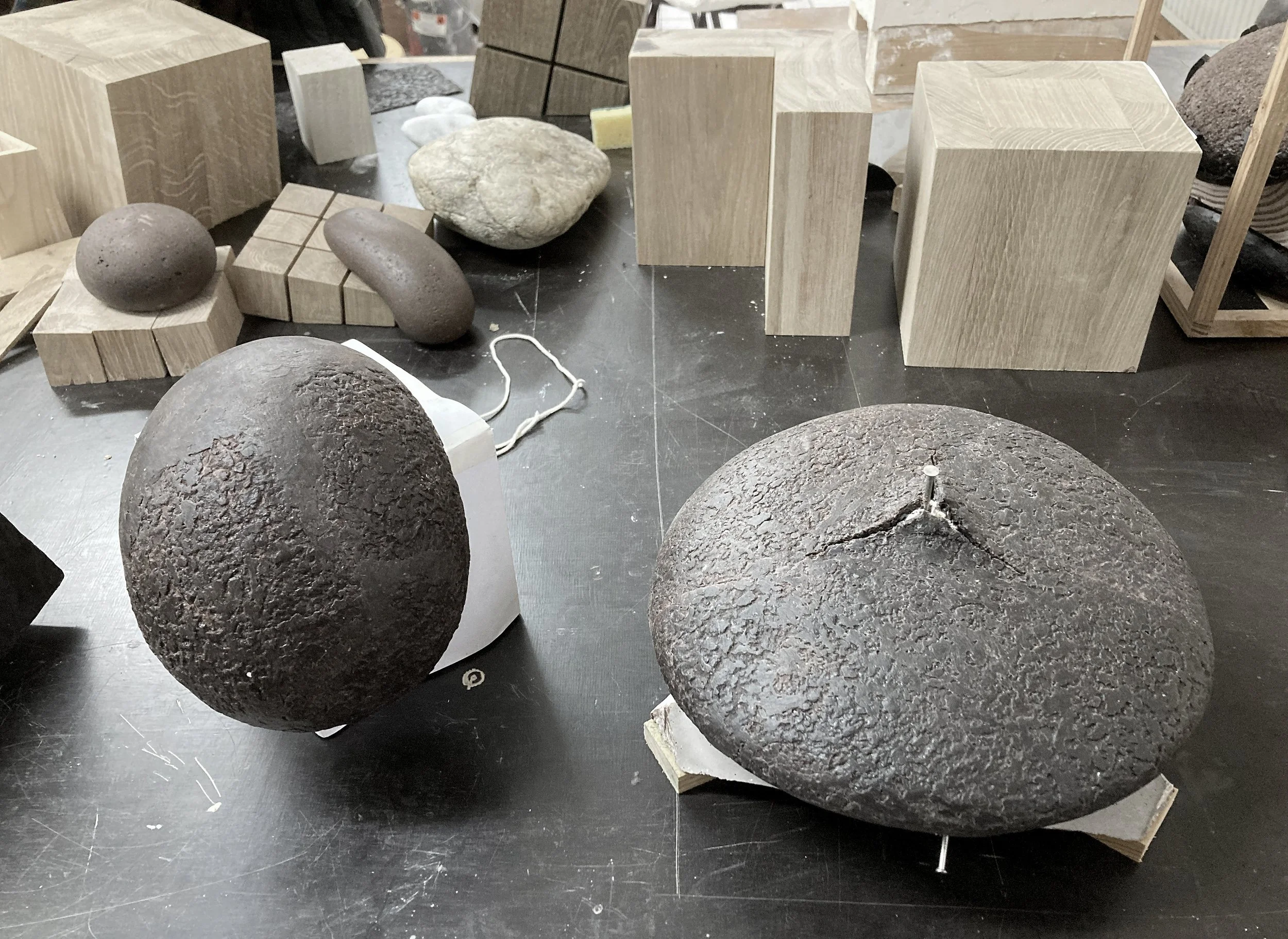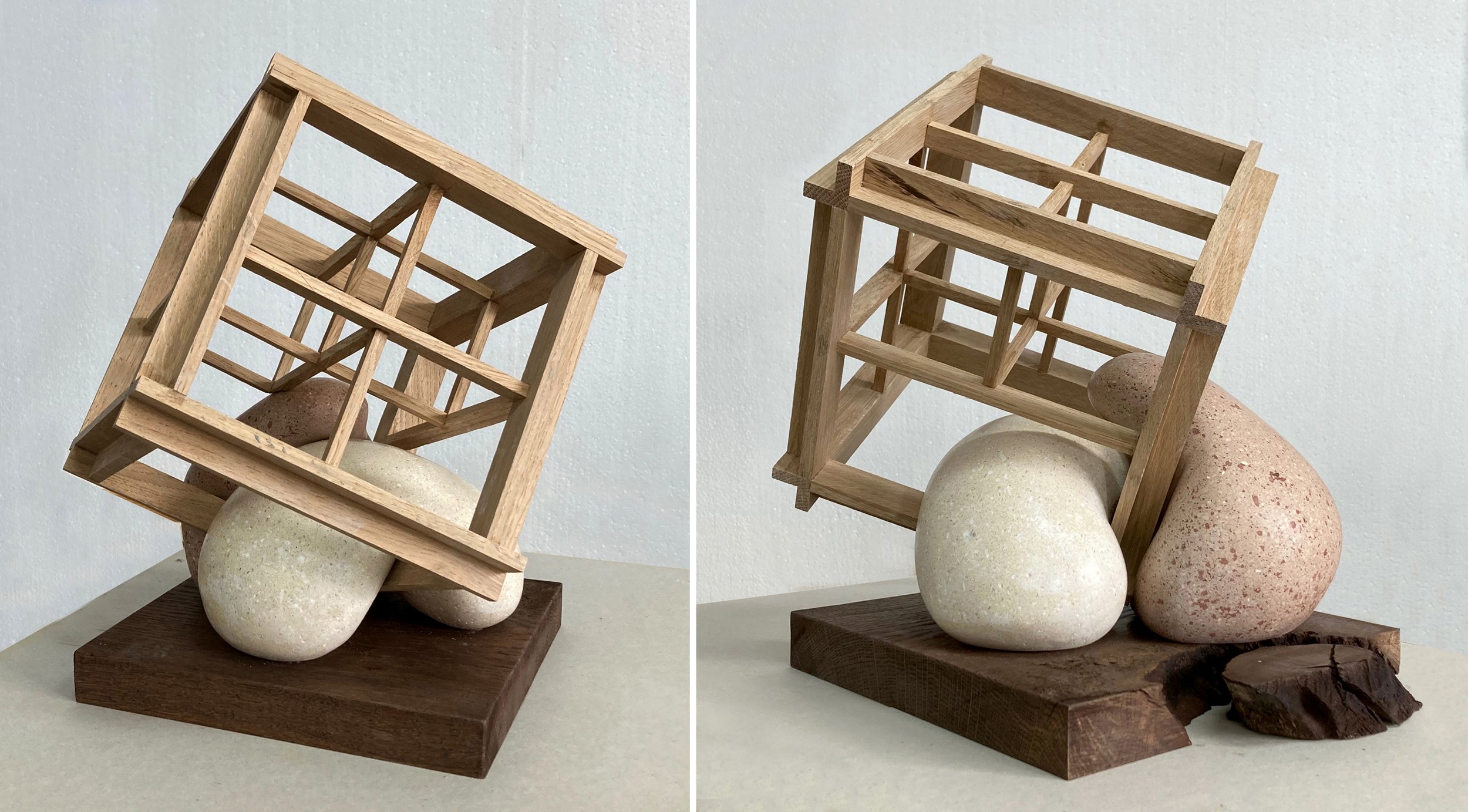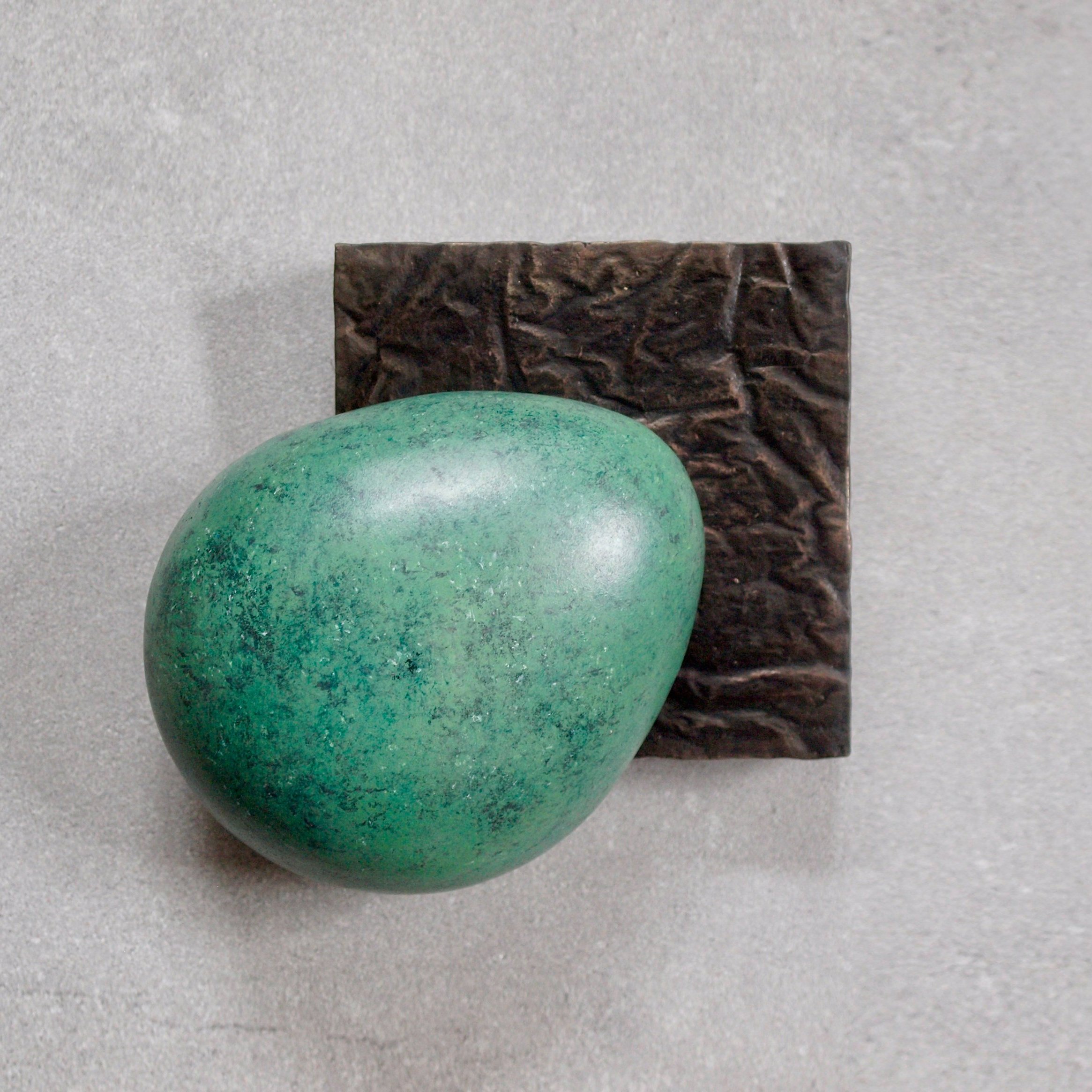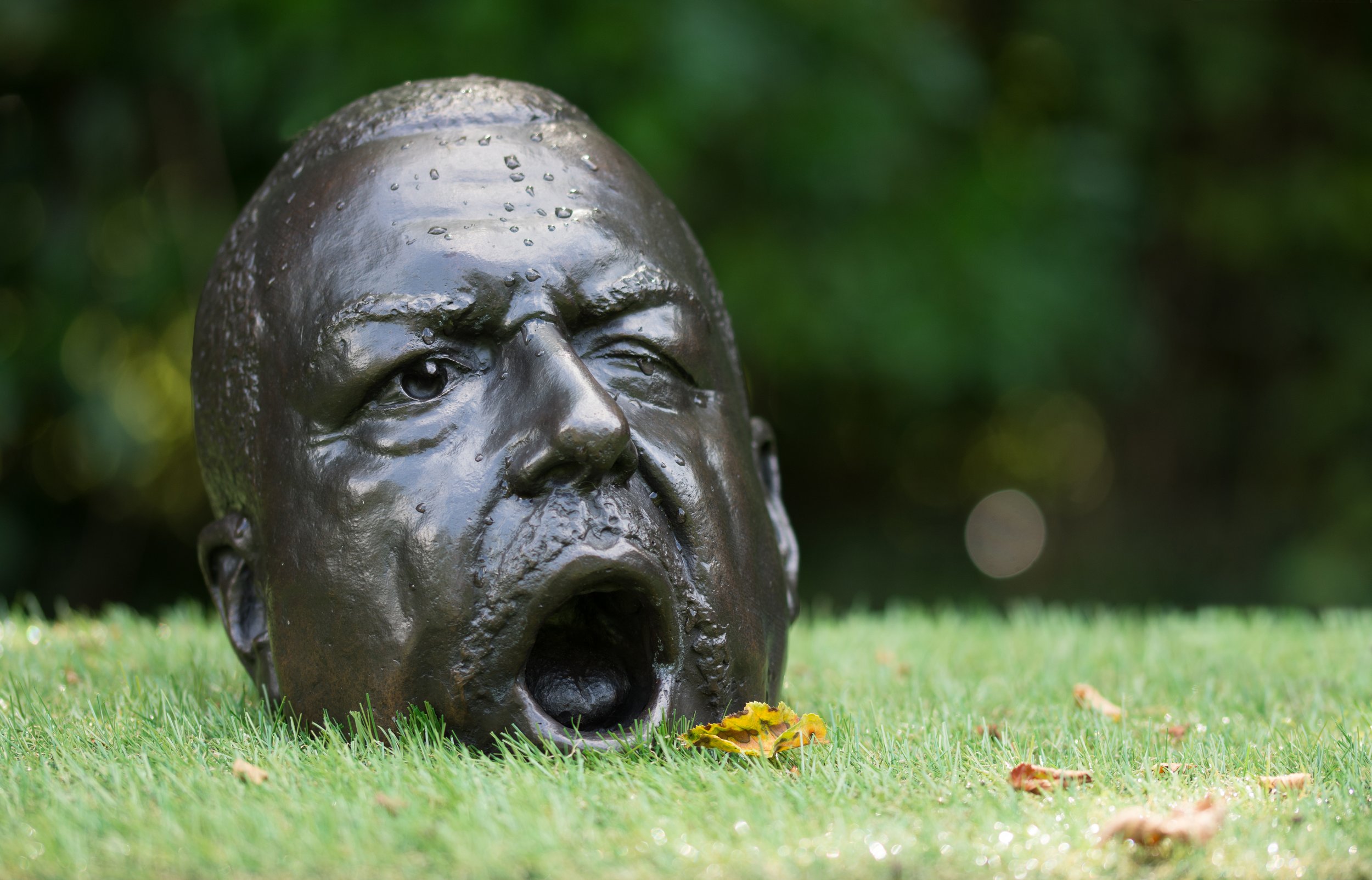Interview with Ton Voortman

“In 2019, during an exhibition on Guernsey, I was inspired by the huge stones on the flat beach. The stones were totally or partly enclosed by sand and water. It was, as it were, a new translation of the symbiosis I had tried to represent until then.
Afterwards I looked again at old work and sketches from the old days at the academy. During the lockdown of 2020 I got stuck for months in my French studio, far away from everything that was familiar to me and depending on the materials available there. The result is a series of works that are totally Antoniem* to my figurative work.
Anotoniem: Two words that have opposite meanings. In English: ‘antonym’ .”
I understand you split your time between your hometown and France; are there differences between the type of inspiration you find in each setting and the work you produce in each place?
I am more of the perspiration than the inspiration, whilst working the ideas and possible variations follow each other automatically. In principle there is no difference in which studio that happens, only the equipment of the studios is different, so that certain activities take place in France and others in the Netherlands.
In much of your current work, you’ve incorporated earth materials such as stone and wood with bronze elements - tell about using these new materials and if they’ve played a role in the type of work you do.
In the past I mainly worked with clay or wax, these materials are flexible and submissive, the ideal material for a dictator or enlightened despot. Where I used to force clay, plaster and iron into the line that I had devised in advance, everything now influences the final result, even chance plays a role. Stone and wood are more unruly, each with its own structures, which you have to take into account. The result is a completely different way of working, much more democratized as well.
“If it cannot be done as it should, then it must be done as it can”, which can usually also lead to new experiences and experiments.
As a working artist, how do you balance your work in a conventional professional career and also keep your personal artistic goals in sight? How did that combination develop with your artistic pursuit?
Because I had to provide for myself and pay for my studies at a young age, I needed a daytime job. And in principle that went well as long as the work is from 9 to 5 without ambition, all for art. But then you come to a printing company where an appeal is on creativity and the result is appreciated if things go wrong.
By starting my own business I expected to get more freedom to work on my sculptures, but before I realized what I was doing I had a graphic studio with a type setting department and twelve employees.
I decided to continue on my own as a designer and illustrator, first as a freelancer and later with my own studio. I found out growing is easier than staying small.
Despite the fact that I enjoyed doing the work, I increasingly realized that all my work eventually ends up in the waste paper bucket. I built a modeling buck and bought a number of clay packs clay, the tone was set.
You’ve been working full-time as a sculptor for a long time, and you’ve had consistent external success and been in many exhibitions and museums worldwide. Tell us about how that happened and how you think of the progression of your career for the last 20 years?
I must say in all fairness that my work travels far bigger distances than I do, the majority of foreign exhibitions are arranged by a gallery or art agent.
When I look back at the progress in my career as a sculptor, I see a mountain landscape, the ascent is more difficult than the descent.
Building and maintaining a good network is very important. As a representative in unnecessary matters, it starts with visiting galleries with a photo folder under your arm. Trying to establish contacts, later also via the internet and social media. But in the end everything depends on coincidences.
“You shouldn’t want to become a sculptor, unless you have no other choice. It is a difficult, but not a poverty-stricken existence.” (Huib Noorlander, sculptor 1928-2004)
Duchamp and Rodin are referenced in your work. How have you been influenced by them?
Destruction #10
I am influenced by life and the things that come your way. Of course, getting to know the oeuvre of various artists and the way in which they express themselves is one thing, but that is different from influence. As a young boy I often went to Museum Boijmans Van Beuningen, in the hall stood life-size “La Mediterranee” by the French sculptor Artistide Maillol.
If there is one thing that determined my choice for sculpture, it is that sculpture, the love for feminine beauty is in my genes. That “La Mediterranee” and the stones on the beach of Guernsey have such an influence on my work as a sculptor is perhaps remarkable but not surprising for a “Cancer”.
Do you feel there is similarity or dichotomy between armor and the female body? How is women’s strength represented through it?
No matter what a woman wears or doesn’t wear, her attitude reflects her strength.
